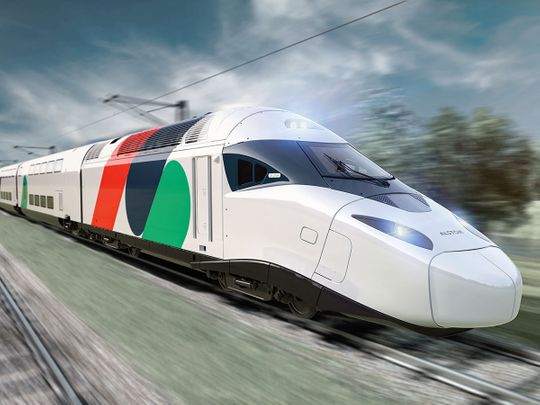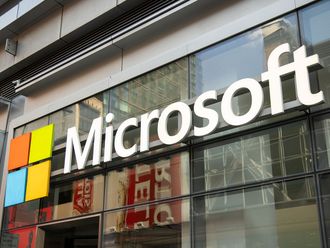
Dubai: In a not too distant future, a businessman in the UAE might be weighing which option to take to travel down to Riyadh. Should he/she catch a flight? Or a train?
Mama Sougoufara knows which ride he will be taking – and not just because he is Managing Director for MENAT territory at Alstom, the French rail mobility giant and with quite a reach in the Gulf markets.
“For a one-hour flight from one Gulf city to another, people are spending more time to get to the airport, go through all the processes there in getting onto the flight, and then comes the actual travel time,” said Sougoufara at Alstom’s Dubai headquarters.
“If (in the future) the traveller is using the rail for a 400-kilometer ride from one city centre to another, we are talking about a one-hour travel time. Or say, one hour 10 minutes or so, on a high-speed line of 350 km/h.

“Today, high-speed networks in Saudi Arabia, for example, is showing the possibility to connect Medina to Jeddah in in less than two hours. It’s all doable.”
Even then, wouldn’t the business traveller still seek the seemingly faster option of just catching a flight?
Sougoufara says this is where ticket pricing on future rail routes will have a say. “Apart from the time you save in getting to airports (and starting the journey), a business trip on a train comes with the comfort of being able to move around, have meetings, and be truly productive during the trip itself.”
Indeed.
While the UAE is already well into creating its rail network through Etihad Rail, some of the other Gulf states are putting some steam into their own efforts. The Saudi metro operations have taken on quite the speed, and more recently, Oman’s making headway.
There’ more happening, said Sougoufara and thus adding to the possibilities for Alstom. Which in 2022 booked 15.47 billion in revenues. The adjusted net profit totalled 292 million euros as the French multinational rode the renewed wave of investments by developing markets in their rail network expansions.
High-speed trains are the flavour of the season…
“There is a real transport-oriented development happening, meaning that cities in the Gulf understand that the way to make transport more attractive is to make it more accessible,” said Sougoufara. “Not only in terms of price, but to have an end-to-end analysis of the travel journey of a person.
“These are amazing times (for projects in the Gulf). I think there is not week without a new project in Saudi Arabia. The authorities in the Gulf want to reengage in very modern ways, in smart and meaningful ways when it comes to public transportation.”
And their residents are ready. The Dubai Metro has been the standout narrative when it comes to what cities can do with rail. Now, Etihad Rail is extending that across key points in the country.
“The UAE, Saudi and Bahrain investments in rail networks are coming together as an incredible transformation and make this one of the most attractive regions,” said Sougoufara. “We have been a key contributor to people movements on the Dubai Metro, and in Jeddah.
“We are also contributing to Riyadh metro networks, being involved in four lines out of the six.”
Inter-city
The Gulf’s metros have or will deliver results in keeping with what the planners in mind. As and when the rail-led transport infrastructure extends to connecting cities, the possibilities become boundless.
Sougoufara puts up what a best-case scenario would be - “You can imagine that people could come into one city, return and re-visit the loop. Say, people living in Abu Dhabi and heading to Dubai for a cultural event.”
The same happening in the other direction. And multiply the toing and froing.
“If you imagine that tomorrow, instead of spending one hour 20 minutes by car between Abu Dhabi and Dubai, someone will spend 30 minutes,” he said.
As Etihad Rail spreads itself out, the gains that can be made on inter-emirate transportation of goods are already striking home. Each additional rail or cargo capacity that get added widens those options of taking out those goods from a seaport to their intended designated end point elsewhere in the UAE.
Bring in the passengers and the same gains get repeated.
“Think of the time that gets saved by not being caught in traffic on the roads,” the Alstom regional chief added. “If we are talking specifically about an inner-city metro, It is extremely good for the economy of the city because you are also increasing the value of the land. The real estate value aspect gets completely changed.
“The city increases the attractiveness of its shopping centers, its cultural districts.”
The impact gets wider, broader and longer. With each additional track…











